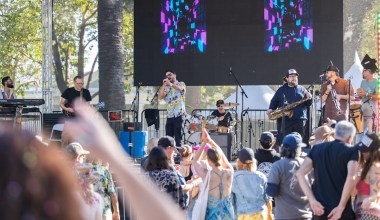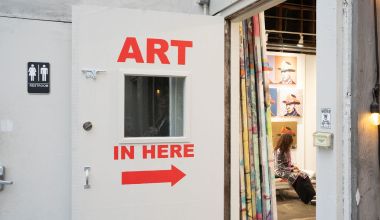Dr. Lynn Fitzgibbons, an infectious disease specialist with Santa Barbara’s Cottage Health, made a presentation to her colleagues on the “extraordinary, unprecedented … access to clinical data hot off the press” about COVID-19. She warned the information was unfiltered, however, and her half-hour talk analyzed the accuracy of a number of topics. Among them are a study that examined the use protective gear around one patient, who was found later to have COVID-19, and information on the apparent efficacy of a variety of drugs.
Directed to clinicians, Dr. Fitzgibbons’s brisk talk included words new to laymen, like “anosmia” and “dysgeusia” (regarding smell and taste), and also observations on a March 17 New England Journal of Medicine letter on how long the virus remained on surfaces.
The study from a number of researchers at the National Institute of Allergy and Infectious Diseases, Princeton, UCLA, and the Centers for Disease Control is often cited in the media and may have led to California’s recommendation on Wednesday of cloth masks for the public. It found the SARS-CoV-2 virus in spray form — as emitted by coughs or sneezes, or in this study, from “a three-jet Collison nebulizer and fed into a Goldberg drum” — remained viable for up to three hours in the air. On plastic and stainless steel, it was 72 hours. On cardboard it was 24 hours; on copper it was about four hours.
Dr. Fitzgibbons followed that up with an observation on the cleaning of the Diamond Princess cruise ship, which was quarantined in Yokohama Harbor for two to three weeks, resulting in more than 600 COVID cases among the 3,700 aboard. A study found that in the cabins of passengers with and without symptoms, parts of the virus were found 17 days after they’d left.
During her talk, she reminded her colleagues that any viral illness, including COVID-19, is a reason to stay home — for three days after complete recovery and to wear a mask for two weeks after symptoms began. She offered positive news to health workers that equipment worn to protect against droplets was entirely effective in a case that tracked 41 workers for 14 days after exposure, including those involved in a difficult intubation.
Drugs to counter the virus were the hottest topic, the doctor said. It was still early days, but the first patient identified in Washington State was infused with the drug developed against Ebola, remdesivir, when his oxygen level dropped severely and a chest x-ray showed he had severe pneumonia. His recovery began the next day.
Two other drugs piquing interest were tocilizumab and hydroxychloroquine. The first is a rheumatoid arthritis medication under clinical trials in China for COVID-19 use. The second is a malaria drug mentioned in White House briefings. Animal studies of hydroxychloroquine show it collects in the lungs, said Dr. Fitzgibbons, where the virus proliferates in humans. A French study found the drug cleared the virus more quickly in the patients who received it. The paper also stated that the antibiotic azithromycin had been given, depending on patient symptoms, though no follow-up was given.
Patients with lupus, a painful and prolonged inflammatory disease, are the main recipients of hydroxychloroquine currently, and stocks are limited, said a number of pharmacists in Santa Barbara whom reporters visited. When the pharmacy received a prescription for the drug from a non-lupus customer, the doctor is called, one pharmacist said, and asked if it is for COVID-19 use. They have so little of it, the pharmacists said, that they reserve it for their lupus patients and do not now distribute it as a hedge against COVID-19.




